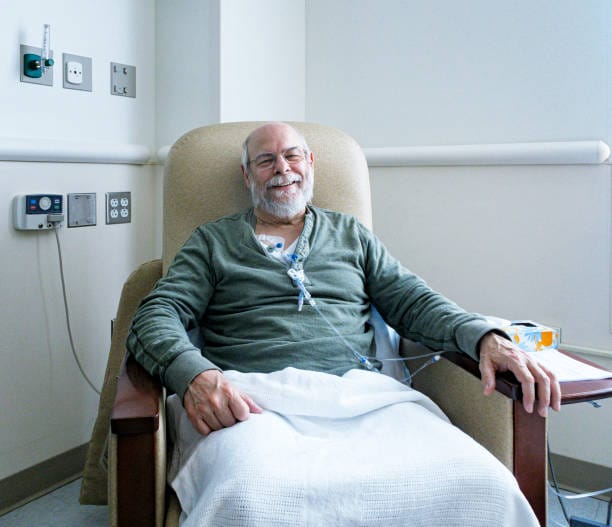Cancer deaths among men predicted to surge 93% globally by 2050: study
“Between 2022 and 2050, in Africa and the Eastern Mediterranean nations, the number of incident cases and deaths is projected to increase 2.5-fold. In contrast, Europe is projected to experience an increase of about one-half,” the researchers said.

By 2050, cancer cases and deaths among men are projected to rise dramatically, with cases increasing by 84 per cent and deaths by 93 per cent, according to a new study published in the medical journal Cancer.
The research published Monday analyzed some 30 cancer types across 185 countries and found that between 2022 and 2050, cancer cases among men are projected to increase from 10.3 million to 19 million.
Cancer deaths are estimated to grow from 5.4 million to 10.5 million, with a greater than two-fold increase among men aged 65 years and older.
“A national and international collaboration, as well as a coordinated multisectoral approach, are essential to improve current cancer outcomes and to reverse the anticipated rise in cancer burden by 2050,” said lead author Habtamu Mellie Bizuayehu, and epidemiologist at the University of Queensland in Australia.
“Implementing and expanding universal health coverage and expanding health infrastructure and establishing publicly funded medical schools and scholarships for training medical and public health staff can improve cancer care and equity,” he said in a Monday news release.
Globally, cancer is the second leading cause of premature death after cardiovascular diseases, but is projected to be the leading cause of death by the end of this century, the study said.
In Canada, cancer was the leading cause of death in 2021, accounting for over one-quarter of all deaths that year, followed by heart disease at 17.7 per cent, according to the latest data from Statistics Canada.
In 2024, the Canadian Cancer Society estimates that 127,100 males and 120,000 females will be diagnosed with cancer. Prostate cancer is expected to account for about one-fifth of all new cancer cases in males.
The organization also predicts that more men (47,300) than women (40,800) will die from cancer in 2024, with lung cancer being the leading cause of cancer deaths in both sexes.

To predict cancer rates in 2050, the study’s researchers used the 2022 Global Cancer Observatory estimates produced by the International Agency for Research on Cancer. The data encompasses national-level estimates for cancer cases, deaths and rates for each country and territory worldwide.
Lung cancer is projected to remain the leading cancer type for both cases and deaths in men by 2050, with cases and deaths increasing by greater than 87 per cent compared with the 2022 estimate, the study found.
For prostate cancer, the study reported 1.4 million cases in 2022, which could rise to more than 2.8 million by 2050. The number of deaths, which stood at 397,430 in 2022, is projected to increase to 939,000 by 2050.
Colorectal cancer in men is also predicted to rise significantly. In 2022, there were just over one million cases globally, and by 2050, this number is expected to increase to 1.9 million. The study noted 499,000 colorectal cancer deaths in 2022, a figure anticipated to more than double by 2050.
Between 2022 and 2050, the cancer type with the highest estimated increase in men is projected to be mesothelioma for incident cases (105.5 per cent increase from 2022) and prostate cancer for deaths (136.4 per cent increase). Testicular cancer is projected to have the lowest increase for both incident cases (22.7 per cent increase) and deaths (40 per cent increase).
Countries with a lower income and life expectancy are also projected to see larger increases in cancer deaths in men.
“Between 2022 and 2050, in Africa and the Eastern Mediterranean nations, the number of incident cases and deaths is projected to increase 2.5-fold. In contrast, Europe is projected to experience an increase of about one-half,” the researchers said.

A 2021 study in the Journal of Clinical Oncology revealed a stark gender disparity in global cancer rates. While men experienced a 19 per cent higher incidence of cancer compared to women in 2020, the mortality gap was even more pronounced, with men facing a 43 per cent higher death rate from the disease.
The authors of the recent Cancer study argue that males tend to exhibit a “higher prevalence of modifiable risk factors,” such as smoking and alcohol consumption, leading to greater cancer incidence and lower survival rates.
“Early detection and interventions for female-specific cancers, such as breast and cervical cancer, have been beneficial; however, there are no comparable programs for male-specific cancers, such as prostate or testicular cancer,” the study said.
“Males participate less in shared screening programs like those for colorectal cancer and have a higher prevalence of modifiable cancer risk factors, including smoking and alcohol consumption.”
The authors also argue that males have more cancer cases attributable to occupational carcinogens than women, “emphasizing the need for comprehensive studies targeting men to enhance evidence-based cancer prevention, which is the focus of the current study.”
While tobacco and alcohol use are linked to the rise in cancer cases, the World Health Organization (WHO) also highlights obesity and notes air pollution remains a key driver of environmental risk factors.
The researchers of the study suggest that enhancing health infrastructure, access and quality, “is essential to improve current cancer outcomes in men and to prepare for the anticipated rise in cancer burden by 2050.”
“It is vital to equip health systems with appropriate infrastructure for cancer diagnosis (e.g., medical laboratories, pathology) and treatment services (e.g., radiation therapy) with affordable and cost-effective options, along with the optimal use of available services,” the study said.





